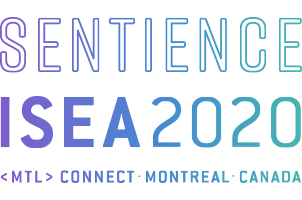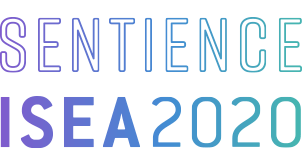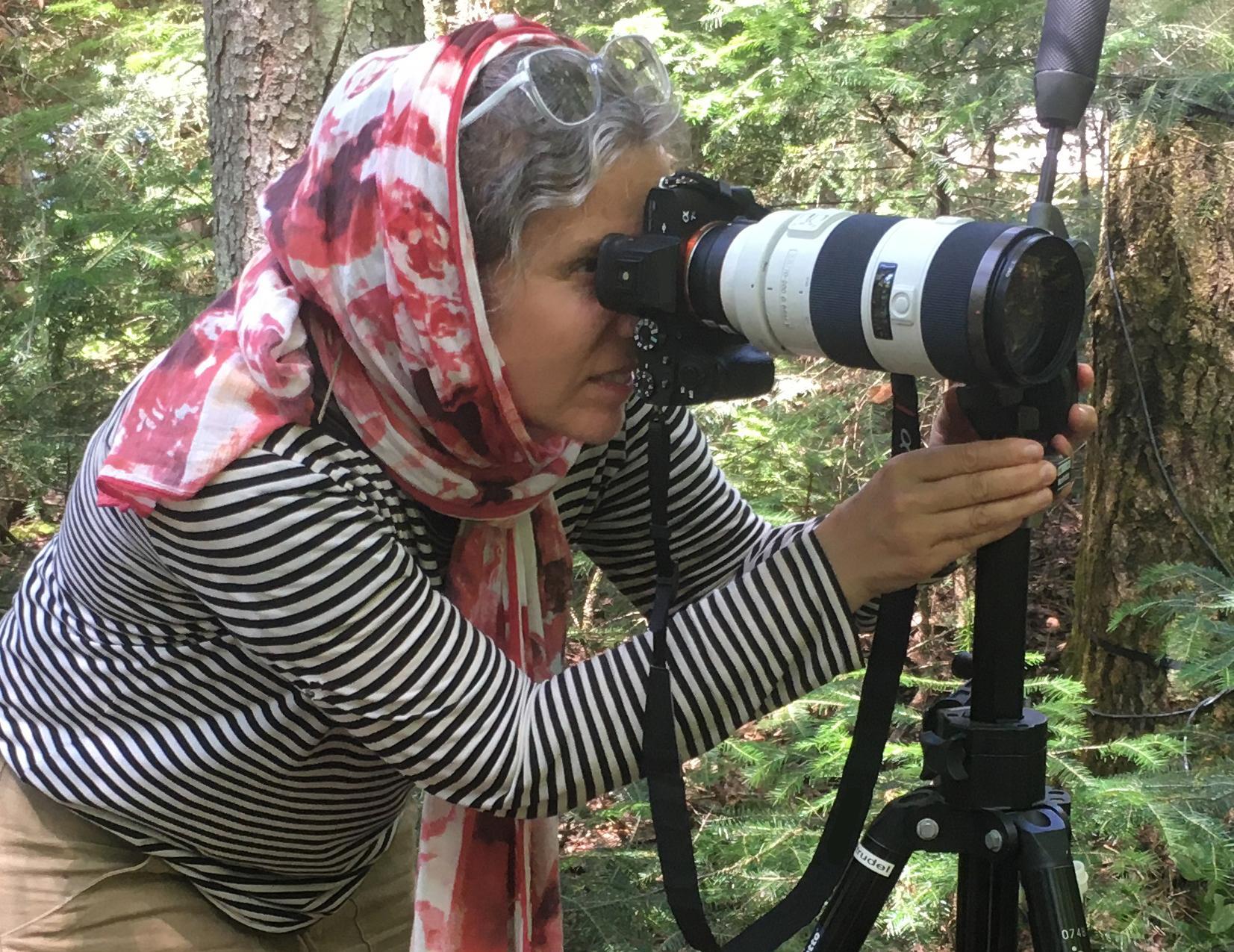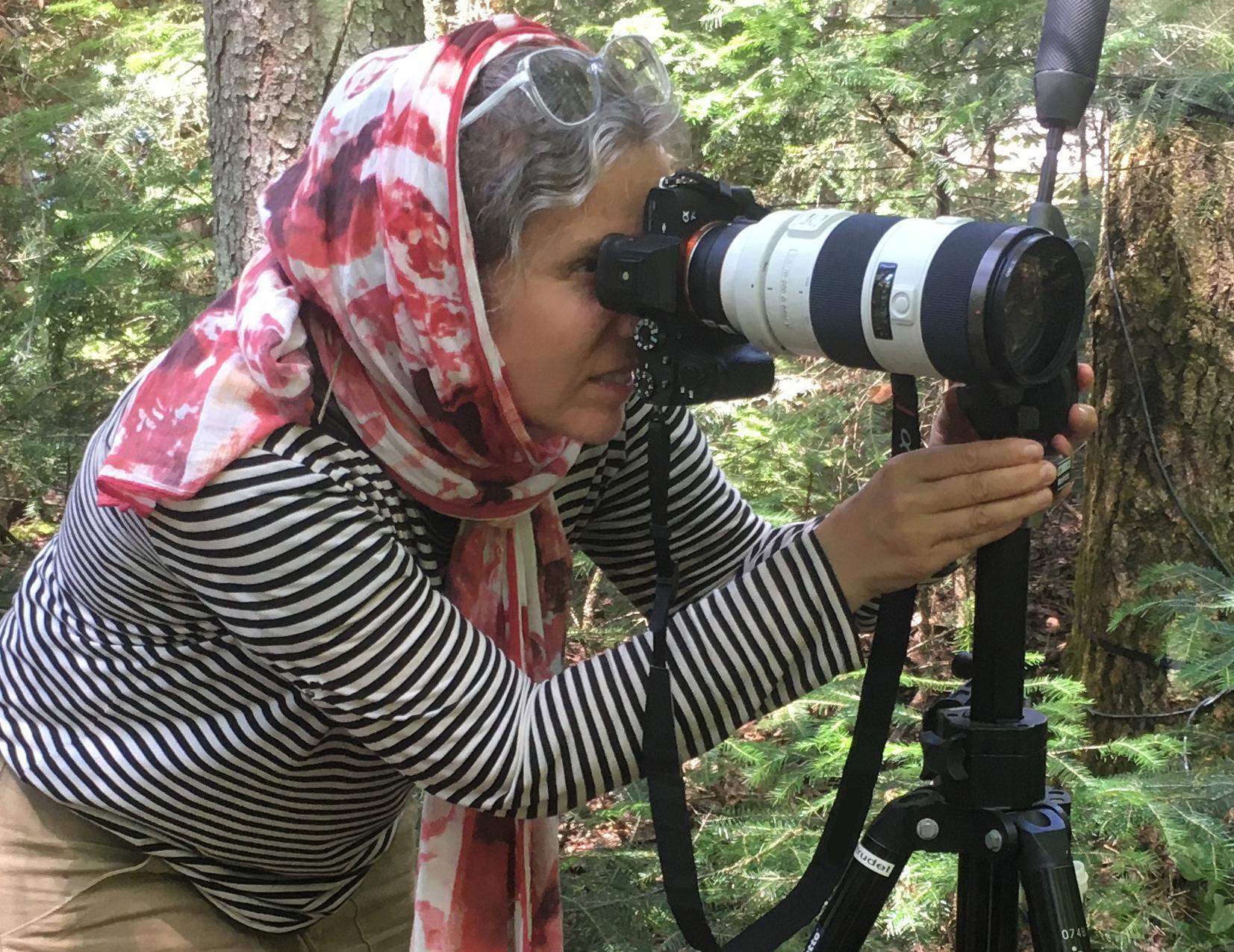
31 Aug INTERVIEW GISÈLE TRUDEL
Whereas the previous ISEA1995 interviews were written responses to questions sent prior, this interview is transcribed from the audio of a dialogue between Gisèle Trudel and Nicolas Holt, and then edited for clarity. The questions are the same, but the feel is different. Trudel recounts both her consequential experience with ISEA1995, and look towards this year’s installment—wondering how it’s central theme of “Why Sentience?” might be better understood as “How Sentience?” and how that might shift the conversation.
Q1
Since ISEA first came to Montreal in 1995, what would you identify as the most important technological development – for your practice and/or in relation to the aims of ISEA – to have taken place, that is, what’s the advance in technology you find to be most pressing or impactful, or maybe what surprised you the most from then until now?
GT: I knew ISEA as an artist, it was the “big event,” the one to attend for people with interests in electronic art. I wanted to go to the one in Finland in ‘93, but my work prevented it. ISEA had that compelling attraction. To be hosted in Montreal was important, but I wasn’t so aware at the time of the academic component. During that period, I was involved in artist-run culture, a network of galleries and production centres across Canada active since the late 1960s produced and administered by artists, for artists.
NH: (shakes head no)
GT: This could be of interest to you, as related to grassroots initiatives. Concerning the most important development – I’ll speak on two levels, on the technological side but also in my practice.
In those years, having personal computer held manifold implications. I purchased mine in ‘93 or ‘94. And with ISEA held in Montreal in ‘95, it was at the centre of a whole shift that was occurring from analogue to digital media. People like me who had been working in artist-run centres – and I’ll take that up later – there was a connection with the personal computer and the advent of the World Wide Web.
I come from a fine art, video and installation background since the mid-80s. I worked initially in 3/4” and then in Betacam for many years. This was a broadcast system, but I didn’t work for corporate projects, I only worked for other artists and for myself. I started seeing the shift from online tape editing to non-linear digital editing with Avid. The Betacam editing systems were high quality, their use by artists marked a shift from mainstream media to tactical media in their own work. There are artist-run centres that are media production centres. In Montreal we have PRIM (Productions réalisations indépendantes de Montréal), Vidéographe, GIV (Groupe intervention vidéo), a feminist collective. These centres emerged out of political strands in the ‘70s and ‘80s where artists became involved in social issues with media production.
The ‘90s are passage from analogue to digital and the Web. Looking back, when I first started making video what I loved about it was the electromagnetic tape. You made work on a cassette and then you would send that cassette to a festival, it would go across the world. This little item contained so much work, so much practice, it was also impersonal. I was very interested in things that could travel on their own, in the same way, I see the Web as coming out of Mail Art. The Web is probably one of the biggest technological advancements of my time. In ’96, I actually started making websites. Collaborative practice happening online in that period was thrilling. My artist friend Florian Wüst was in Germany and he was hosted with a server called Thing.net in NYC. He opened a web space for us and we collaborated by exchanging HTML code. We would be working on the same webpage, doing things together yet remotely. It may sound commonplace today, but it was a new way to collaborate. Later on, the Web transformed into social media platforms. The strength of decentralization that happened initially with the Web versus mass media was eventually reterritorialized with the social media giants.
Another development is the factor of technical acceleration that occurs with the constant renewal of software and machines. We are now much more aware of programmed obsolescence and increasing e-waste. My main point here is that artists have consistently been involved with these technical and social developments that are continually in flux and I think that’s very important to work with contemporary instruments and tools.
NH: I think that’s a super fascinating answer, especially because highlight that point in video’s early history where artists almost had no recourse but to turn towards broadcast production spaces. You have someone like, say, Bill Viola or Nam June Paik, who their first major video works were being done in these high-tech production facilities that were intimately tied to TV. Really video’s history, from the early sixties and even before, has always been tied to television, tied to this already codified media platform.
And that’s very central to video’s early history, and then the transition into full digital, and what you’re pointing at here is like a second phase in that with the rise of the internet and the rise of the personal computer—I think you lay that out really well how. Video—I don’t want to say was given a second life—but it was transformed again, it was transformed again with the rise of the internet, the rise of the personal computer and I think you make clear this later phase in the history of video from a personal point of view.
GT: For example, I never wanted to work with the Hi-8 video format, because it didn’t have timecode, I understood its advantages to sync sequences in electronic time and with audio. In the mid-90s, another important technical advancement was MiniDV (mini Digital Video), tiny tape cassettes with timecode. I also purchased a semipro camera which generated timecode. This changed how we could produce our works in our own home studios. I still have some of those cassettes, I hold on to them, as a reflection on the transformation and miniaturization of technologies in time. In Canada, artists were working with broadcast systems, many of them were aiming to be shown on television, sometimes a niche of midnight shows.
NH: Yeah, the public access kind of…
GT: Yes, public access TV, such as Paper Tiger Television in NY. In Canada, the broadcast quality brought together many people and resources in artist-run centres. We shared knowledge and methods. It’s part of a DIY movement (Do-It-Yourself). Eventually, people thought they could do everything by themselves with their own equipment. I think there is paradoxically more isolation today, even if we have amazing instruments.
The other part of my response is related to my own artistic practice. For ISEA, I produced a stereoscopic video installation called Timepiece, which was extremely demanding to make. At the time, I was reflecting on the history of science and I actualized in a video sculpture an early photographic apparatus, the Wheatstone stereoscope from 1838. I wanted to explore the sensation of three-dimensional space on a flat surface, but I didn’t want people to wear 3D glasses which were popular at the time, I didn’t want people to wear anything to experience it. So I delved into this coalescence of technologies. It was produced in Betacam but presented with two VHS players and a synchronizer. I somehow still marvel that I made that piece under those conditions and that it worked!
This was also the last time I produced an artwork under my own personal name. Following the production of that piece, in 1996, I founded an artistic research unit called Ælab with my partner Stéphane Claude, who is an audio composer and immersive sound specialist. In 1997, we began the production of Sparks, our experimental documentary about inventor Nikola Tesla.
Q2
Related to the first question, since 1995, is there a particular theoretical development like the increasing “generalization” of ecology, in terms of media or otherwise; media archaeology; the new materialisms; or the shift towards environments in media studies – you’ve felt most significantly or you believe to be especially consequential?
GT : It’s not necessarily couched in 1995, but Matthew Fuller’s book Media Ecologies was really a crucial moment for me to understand media and its multiple and shifting tensions and relations. Fuller helped me to delve into Guattari’s thought about media, who was so prescient in how he was talking about post-media already in the early ‘90s.
I appreciate Guattari’s thought because the word ecology is, still to this day, equated with nature and that is certainly pertinent in many aspects. Guattari brought the concept of ecology in a more politicized way, his “three ecologies” relate to the continuous differentiation and interplay of the environmental, the social and the personal. I appreciate thinking of nature with the French philosopher of science, Gilbert Simondon, whereby nature is not separate from the human, nature is a continuous co-construction with between environments, humans and technologies. Of course, technology can certainly be disastrous, but for me, the most important aspect is to keep thinking with technology.
I recently had an interesting discussion with Jimmy Papatie, an Anicinape from Kitcisakik in the Abitibi-Témiscamingue region, he’s the director of natural resources in his community. He explained to me that there are four ecologies, which includes the previous three mentioned, with the addition of the spiritual. It’s a way of giving back, not just taking. This is an important dimension for me, the spiritual as life, an exchange of forces, as I’m also very interested in the concept of naturecultures by Donna Haraway and zoe by Rosi Bradotti.
NH: I think that’s really good. When I was writing that question, I was thinking about “what are the necessary transformations that have happened to theory since then?” (1995), and I think what you point out about media ecologies is really interesting. It’s funny because the last question touched on things that are even much earlier than ISEA1995, and likewise, when media ecology was first formulated it happened in 1968 with Neil Postman. It was very intent on describing the kinds of relationships between people and “media” with a capital M, newspapers for example, and the idea of humanly legible messages was very central to media ecology as it first started. It was a media ecology very—I don’t want to say insensitive—but, didn’t really pay much mind to maybe the bio-ecologies that might have been conjured up previously when one invoked “ecology.” What you narrate there is a like almost like re-folding in, like a kind of reintroduction of what else can be described through an ecological paradigm …
GT: yes
NH: If we started with just messages, human-made messages within an environment of technology, that’s where media ecology started. Then, later on, we see the introduction of more natural or biological entities, more technological entities, and as you point out, even these kinds of psychic or spiritual entities. These transformative inclusions are what I tried to get at with my reference to the “generalizing of ecology” in the question above. It’s why I think Bataille is so important these days for his thoughts on the “generalizing of the economy,” and asking how solar energy and the energy derived from the planet itself might expand our understanding of economy beyond excavated and abstracted raw materials on a human scale. I think that’s played a really big part in contemporary understandings of ecology and thinking what else interacts ecologically.
GT: The Canadian philosopher Alain Deneault argues to refresh the connection between economy and ecology. Economy has become a strictly metric mode of measuring gains, losses, risks, etc. I had a bad attitude about economy in the past because of that and now it has shifted for me, it’s an artificial separation. I realize it can be a very dynamic to consider economy and ecology together, especially with the tremendous losses occurring and the devastation of ecosystems.
NH: Yes, it’s as if economists behave as if “economy” and “ecology” don’t come from the same root word…
GT: exactly…
NH: and I think that’s like one of the problems, you know, it’s like these two things are intimately—even on the very level of the formation of the word itself—intertwined, they come from the same place, and I think…
GT: yes
NH: we’re not doing ourselves any help by continually reinforcing that false distinction that you…
GT: it’s a dichotomy rooted in a false sense of control, a throwback to the early cybernetic era [laughs]… For me there is a constant flux, an in-between of tensions which can be thought of as the “milieu,” the concept put forth by Simondon. In the milieu (the middle), anything can arise, this is especially important in these critical times of constant thresholds and tipping points being attained, enabling also to think anew and differently.
Q3
Thinking about this year’s theme, there might be something a bit ironic about exploring the notion of sentience (historically reserved for biological life, and quite a small subsection of it) through digital media and electronic arts – or just the machinic in general, what’s been historically relegated to non-life. There’s been much work done in the past 25 years to loosen the boundaries between such distinctions, and how do you imagine ISEA 2020 helping in that?
GT: What I appreciate about the title or the theme is that it is formulated as a question: Why Sentience? If it had been only the word sentience in capital letters, it would be a statement instead of a question. I think, however, I would have preferred How Sentience?
NH: I like that…
GT: The “why” question brings it into a semantic and semiotic field that is invariably human. Maybe it could have been only the single word sentience but with a question mark, Sentience? This perhaps relates to the four ecologies we were discussing earlier, to think about sympoiesis, as Haraway talks about it, the idea of sharing, inhabiting the trouble. With sentience, the focus has traditionally been oriented to reason and intention as humans, but there’s wonderful work now being done about phenomena and materials and minds other-than-human. When thinking about chains or trajectories of matter, I sense this is what sentience could be pointing to. Think about the Big Bang which created everything, Carl Sagan states that we’re made of “star stuff.” What an incredibly rich and long trajectory! However, if we frame matter in a user’s mentality, whereby things are there to be appropriated, used and thrown away, we keep hitting the same wall. Perhaps sentience permits to take into account the multiple in-between trajectories that compose the real, a myriad of situated expressions. And perhaps sentience is a question of ethics, because ethics questions preconditioned hierarchies between humans and other forms. I’m very curious to know how it will be discussed it at the conference.
NH: Yeah, I think that’s really very interesting—I think it’s one of the most important topics, especially because I’m interested in cognitive science and embodied cognition. What you just said reminds me of an important development in our understanding of the intentional mode of human consciousness from cognitive science—that the “I” that sees a world and creates a coherent narrative atop it, is actually a very, very tiny bit of what it means to be in the world as a sensing thing.
GT: Exactly…
NH: Katherine Hayles most recent book, Unthought: The Power of the Cognitive Nonconscious (2017),is all about this. And it’s perhaps one of my favorite books I’ve read in a very long time, a really excellent book! It makes me think—when you were talking about these different chains that comprise the experiential situation that we’re in—that’s kind of her argument. Purposive consciousness, the awareness of an “I,” is just like a little siphon and, it’s nestled atop a much larger host of processes that are completely either too fast or too small to be noticed by…
GT: Or too huge…
NH: Or too huge! They’re too rich, and they’re both within the body and they’re outside of the body, and then, even underneath those there’s a cosmic host of material processes. And I think we’ve got it mixed up, you know, humans have started from this really, very tiny place (of human consciousness) and tried to go down, but really that huge, supportive mass is where we come from, and thought tries to self-efface that.
GT: I agree…
NH: and I think that’s exactly what you’re getting at, and I think you phrased it really well. It seems that if sentience has anything to do at all with what we’re talking about, it starts at that base. It’s not that kind of condensation or compression that allows us to wake up in the morning and feel as if we are who we are when we went to bed the night prior. It’s not that kind of thing, sentience really originates at the bottom.
And that’s why I think something like “How Sentience?” is really good, because it asks how that base is working, and asks how those lower levels of material processes are functioning. Whereas “Why Sentience” is almost like asking for a justification!
GT: Yes, perhaps you’re right…
NH: It’s almost juridical, you know: “well, why sentience?”
GT: It then becomes a rhetorical question. Carl Sagan said humans are ways for the universe to think itself. I am so impressed with that comment. In the 90s I was involved with Tibetan Buddhism, meditating on compassion for all sentient beings. Today, I appreciate how Rosi Braidotti discusses life as unfolding processes without any moral frame, life as continuous experimentation.
Q4
Is there an artwork, exhibition, or panel you vividly remember? Could you recreate that experience for us?
The first piece I vividly remember was Catherine Richards’ Curiosity Cabinet at the End of the Millennium. She is pioneering media artist in Canada and she built her installation as a Faraday cage. One could sit inside, it was made of copper mesh and wood. The exhibition was held in an old primary school. Her piece was well adapted to one the rooms and there was a big and long copper tube that went from the installation on the 2nd floor, through the window and down into the ground in the yard, in the soil, it was “grounded.” This work was clever and beautifully crafted with important considerations about electromagnetic fields. I appreciated that piece because in that period, I was also looking at the history of science and the early history of media.
Another artwork was The Frenchman Lake by Bill Vorn and Louis-Philippe Demers. Their installation was in a large room at the beginning of the exhibition site. As I remember, there were robotic components, moving lights and sound mechanisms that were placed in petrol barrels. Their collaborations were impressive, uncompromising and unsettling, playing with raucous sound, pulsating light and mechanical components. I understood these pieces as exploring activity in the barrels as uncontrollable conduits of radioactivity. At the time, I made a connection to the Chernobyl disaster, which happened only a few years earlier.
Another wonderful piece was Granular Synthesis’ Modell 5, a multiscreen projection and sound performance. This work exemplifies for me a threshold, the passing from analogue to digital video and sound. The two artists were already perfecting single frame editing. As you know, there are 30 frames in a video second, and they were able to perform “the frame” if you will, 1/30th of a second. This surreal exploration of the granular with repetition and loops created either monstrous or ecstatic expressions of Japanese performer Akemi Takeya, her moving-image portraits presented on four large vertical screens.
Q5
Did attending ISEA 1995 alter your path in an important way, either professionally, artistically, or otherwise?
As mentioned earlier, in Montreal, there was an impressive hub of people working with technologies in artistic or activist ways, so I think ISEA was a new instantiation of that. After ISEA, many new endeavours were initiated, for example, the beginning of the SAT (Société des arts technologiques) with Alain Mongeau and Monique Savoie. In ‘96, I started working at OBORO, which is an artist-run centre established since the ‘80s and we developed TechnOboro with Cheryl Sim and OBORO’s cofounder, Daniel Dion. We ran residencies and workshops for artists, we had two tables and a few chairs and a computer, there was a lot of good energy. We were doing postage-size stamp video on a 840AV computer and we were super excited about that! It was a fabulous time and eventually it became a full-fledged media lab that it still operational today. Then came along Studio XX, the Daniel Langlois foundation, the Festival du nouveau cinéma et nouveaux médias (FCMM), Mutek, Elektra and others. It was a very crucial moment for Montreal to recognize its techno roots, proficiency and potential outcomes. It’s an extremely rich trajectory for artist-run culture with other centres emerging in time, such as Eastern Bloc, perte de signal, etc. The Montreal legacy also has links in academia and communities of practice, with people such as myself now being an academia for almost twenty years. My work has been about bridging these cultures. The technological past also brought forth research-creation and the founding of Hexagram in 2001, an interuniversity techno arts cluster which also still exists to this day. The research-creation field has since matured with younger artists and students now being hired in academia. Montreal’s grassroots base continuously favours different ways of coming together and making knowledge.
NH: We were talking on a theoretical level earlier about distributed ecologies, but this is it! The way people and their practices and their intentions compose, recompose, decompose, and create a landscape of innovative thinking. I think that’s really something ISEA wants to remind people of going into its 2020 edition. To say, “hey, this is where we’ve come from, what we’ve tried to do, and we hope to be able to show that again.”
GT: I started making art in the eighties and my art education was modernist. Since becoming a professor myself, I have become much more engaged in collective issues. There was a period when we were fascinated by the machines themselves. To link this now to the notion of sentience, I think there’s still a lot of work to be done, to expand the connection between theory and practice, self-expression connecting to collective expression, social and environmental issues as explored in academia and artist-run culture.
NH: Yeah, I think so, I think that’s really good. All the questions that you picked all worked really well together and created, you know, a nice flow…
GT: a mosaic
NH: yes, a nice mosaic, and a nice trajectory from the theory stuff to the more on-the-ground topics.
GT: Thank you Nic for this dialogue and for your questions.
NH: And thank you, Gisèle—it was such a pleasure!
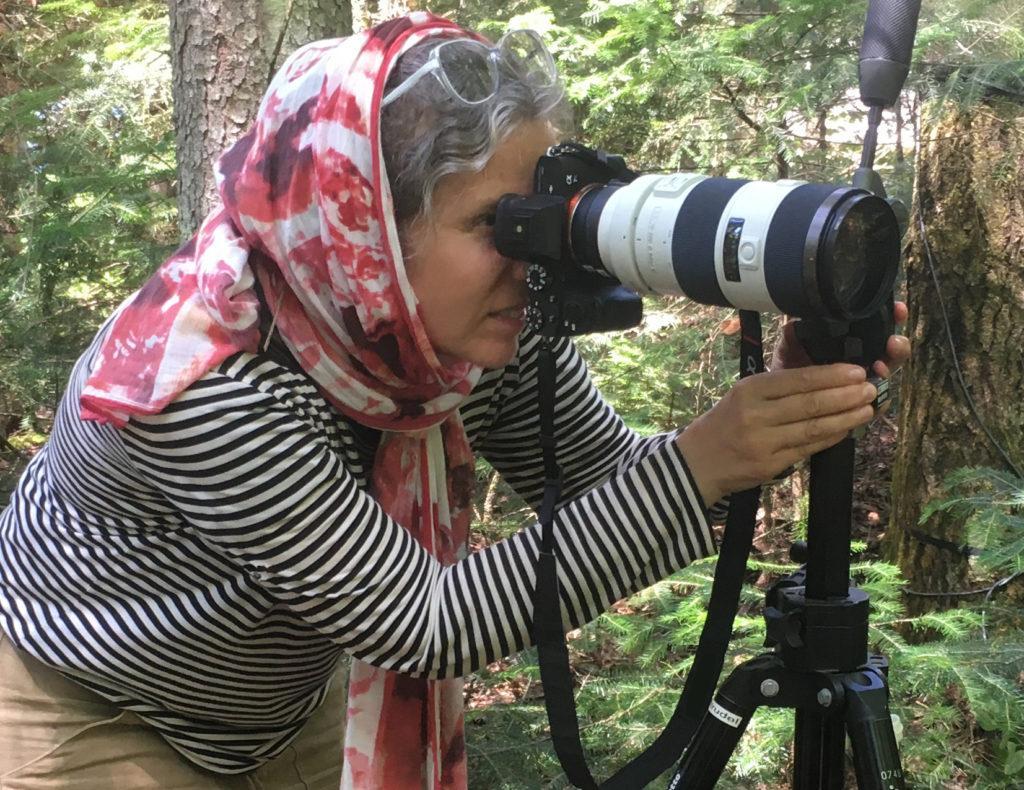
Photo credit: Stéphane Claude
Gisèle Trudel is an artist and professor at UQAM’s École des arts visuels et médiatiques. She co-founded the Ælab research unit with Stéphane Claude in 1996 (aelab.com). She holds the Canada Research Chair in the arts, ecotechnologies of practice and climate change (2020-2025).

